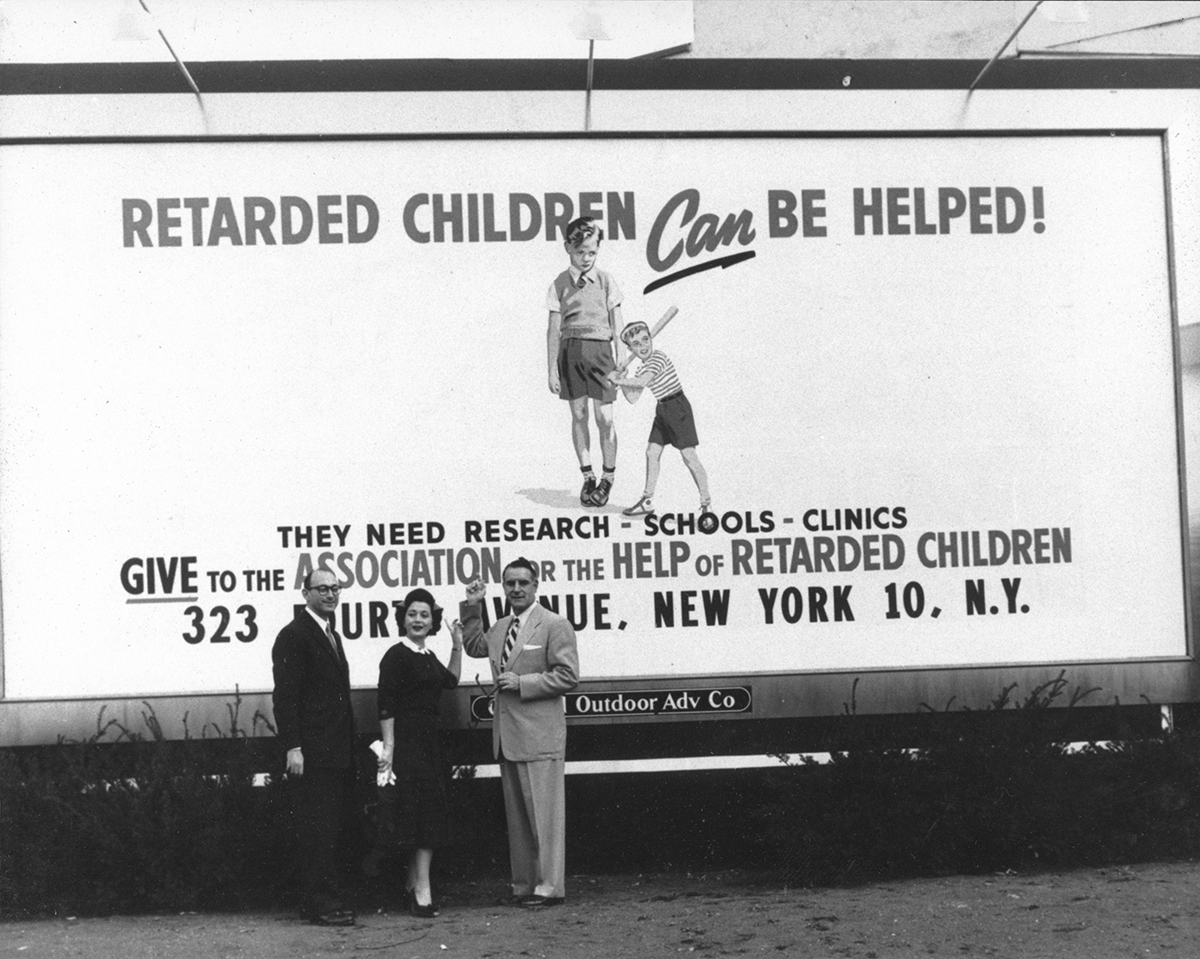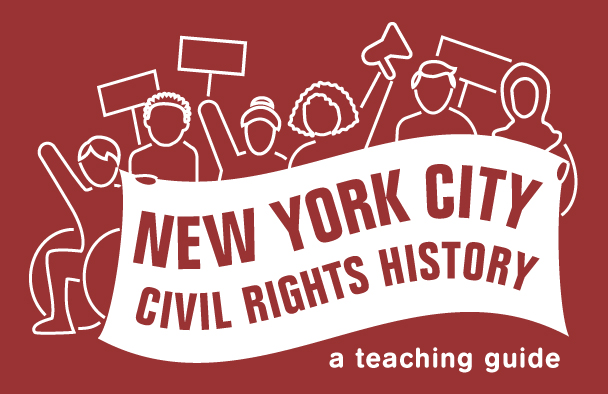You are here:
AHRC First Fundraising Billboard

Date: 1951
Caption: Parent activists pose in front of the AHRC’s first fundraising billboard. The organization’s mission started out providing day programs and grew into a political advocacy organization.

Parents of children with intellectual and developmental disabilities were often told to send their children to a state residential school if their IQ scores were low. Schools could set a cut-off for IQ scores and then exclude children with scores below that cut-off from public special education classes.1 Some families who had the financial means chose to keep their children at home, but still wanted them to be educated. One such parent, Ann Greenberg, placed a classified ad in the New York Post, looking for parents interested in starting their own day program for children with developmental and intellectual disabilities. Her advertisement (and others like this billboard) eventually attracted hundreds of people looking for similar support for their children.2
The group later named itself the Association for the Help of Retarded Children (AHRC), and established several chapters in and around New York City. It was one of the earliest organizations of its kind in the country.3 They also pushed for community hospitals and group homes for adults, established a siblings network, and worked with the NYC Board of Education and CUNY to expand opportunities for educational access.4
-
Margaret A. Winzer, The History of Special Education: From Isolation to Integration (Washington, DC: Gallaudet University Press, 1993), 275. ↩︎
-
AHRC New York, “70 Years Later, A Classified Ad Still Changing Lives,” AHRC New York City (blog), July 6, 2018, https://www.ahrcnyc.org/news/70-years-later-a-classified-ad-still-changing-lives/. ↩︎
-
Keith Mayes, The Unteachables: Disability Rights and the Invention of Black Special Education (Minneapolis: University of Minnesota Press, 2023), 76. ↩︎
-
AHRC New York City, “Our History,” AHRC New York City (blog), accessed July 31, 2023, https://www.ahrcnyc.org/about/history/. ↩︎
Categories: New York State, community activism
This item is part of "The Parents’ Movement for Deinstitutionalization and School Access" in "Seeking Equity for Disabled Students"
Item Details
Date: 1951
Creator: AHRC of New York City
Source: The ARC, New York Historical Collection
Copyright: Under copyright. Used with permission. Courtesy of The ARC, New York.
How to cite: “AHRC First Fundraising Billboard,” AHRC of New York City, in New York City Civil Rights History Project, Accessed: [Month Day, Year], https://nyccivilrightshistory.org/gallery/first-billboard.
Questions to Consider
- When the state left parents with no option for educating their children in public schools, how did they respond?
- When AHRC formed, what kind of support was available for parents who didn’t want to send their children away to an institution?
References
How to Print this Page
- Press Ctrl + P or Cmd + P to open the print dialogue window.
- Under settings, choose "display headers and footers" if you want to print page numbers and the web address.
- Embedded PDF files will not print as part of the page. For best printing results, download the PDF and print from Adobe Reader or Preview.
